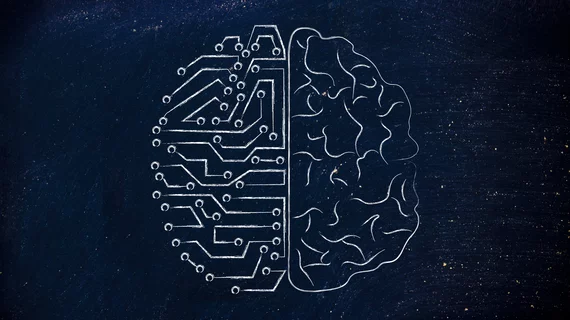3 key ways AI can be used in interventional radiology
Artificial intelligence (AI), especially machine learning (ML), is destined to play a key role in the future of interventional radiology (IR), according to the authors of a new study published in the Journal of Vascular and Interventional Radiology.
“Clinical research and technologic advancements have introduced paradigm shifts improving clinical outcomes; however, they have also generated an overwhelming amount of disparate clinical, laboratory, and imaging data,” wrote Brian Letzen, MD, department of radiology and biomedical imaging at Yale School of Medicine in New Haven, Connecticut, and colleagues. “This is especially true for image-guided minimally invasive tumor therapies that rely on multidisciplinary decision making and a multimodality imaging environment.”
The authors went on to discuss some of the ways the practice of IR will benefit from ML, focusing on hepatic interventional oncology (IO) as an example. These are three ways they said ML could transform IO:
1. Improving diagnosis
“One of the fastest growing areas of AI is deep learning–based radiologic classification for diagnosis,” the authors wrote, noting that convolutional neural networks (CNNs) are now being used to classify hepatic masses on ultrasound, CT and even MR imaging. In addition, the more CNNs are used, the more specialists will be able to learn about them and use them to improve the overall quality of patient care.
“As CNNs function as black boxes, approaches that incorporate interpretability will likely facilitate clinical translation by allowing physicians to understand the reasoning behind decisions and predict when they may fail,” Letzen et al. wrote. “Creating such models can facilitate workflow improvement and help identify novel imaging biomarkers for effective diagnosis and staging.”
2. Improving patient selection
ML is able to help specialists predict therapeutic outcomes, the authors noted, which means more patients should receive the exact care they need—while fewer patients should be exposed to treatments that won’t help them.
“Once expanded to larger and more diverse cohorts, such mechanisms can identify likely nonresponders before initiation of therapy, sparing patients formally amenable for locoregional therapies from unnecessary treatment,” the authors wrote. “Such mechanisms—when bolstered by appropriate data—ultimately have the potential to replace current therapeutic recommendations and staging systems.”
3. Improving IR procedures
The authors explained that ML “has the potential to improve many aspects of an IR procedure.” It could lead to the development of new catheter navigation assistance systems, for instance, or estimating ablation margins.
“ML models can run on the order of milliseconds, allowing for computations that do not slow intraprocedural decision making,” they added.

